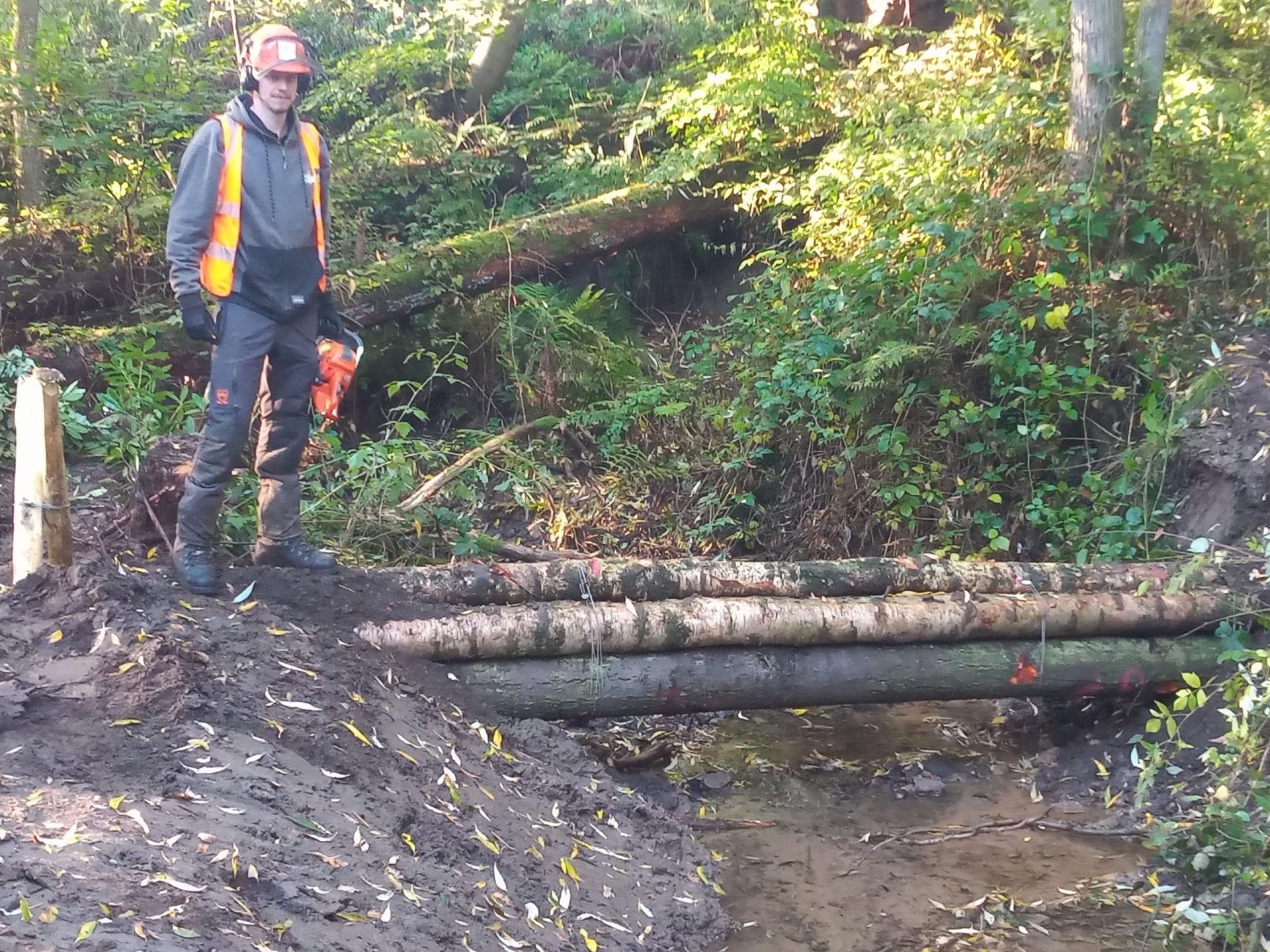We recently undertook a project for National Trust at
Lyme Park in Cheshire to improve water quality, reduce flooding and increase biodiversity across the estate. Our work focused on an area of ancient woodland where there was a need to improve the quality of the water leaving the estate, as well as to create a wet woodland habitat mosaic.
The team created a series of twelve leaky dams with accompanying ponds and scrapes. Leaky dams were built into the current watercourses to hold back excess rainwater and release it more gradually into the streams to prevent them from being overwhelmed. Ponds and scrapes were added to store excess water in times of heavy rainfall until the natural water system is able to cope with it.
This form of flood management is 100% natural, more effective and less intrusive than modern methods of flood mitigation and supports the wildlife of Lyme Park too. By improving biodiversity in the woodland and creating a riparian habitat, numerous species of amphibians, insects and birds will thrive.







